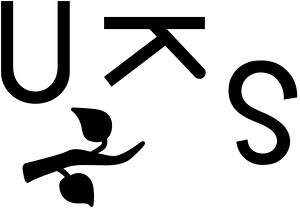Keysers gate 1
0165 Oslo
Norway
Hours: Wednesday–Sunday 12–5pm,
Thursday 12–7pm
T +47 22 19 50 50
info@uks.no
Founded for artists by artists in 1921 by the Oslo avant-garde—originally meeting at local bars to encourage artistic showcasing, critical debate, and political work—UKS (Unge Kunstneres Samfund / Young Artists’ Society) is today one of Oslo’s core institutions for international contemporary art while remaining a Norwegian, political membership organization.
Through Spring 2018, UKS sets forth a series of solo exhibitions focusing uniquely on new productions by young artists—Nora Joung, Natalie Price Hafslund, and Sandra Mujinga. This series will occupy both the recently renovated UKS grounds in Oslo’s city center and a part of the neighboring venue Kunstnernes Hus, enabling a double exposé of each practice, spanning larger gestures and main streams to tributary fissures and crevices.
Complementing the locus on emerging artistic positions, on the one hand, UKS’ historical material will soon be on display in a refurbished archive space. On the other, Scandinavia’s infamously high level of trust in the freedom of speech within arts and culture will be called to question this season. How “Fri Kunst” was conceptualized in Norway and abroad in the post-war era is a reoccurring subject matter, to which, among others, Lene Berg, Will Bradley, Anselm Franke, and Paz Guevara will contribute their perspectives.
In parallel, UKS continues its growing series of talks on Artists’ Institutions—with Prem Krishnamurthy and Chris Sharp this spring—and its regular program fixture MINIBAR, recently featuring BOB’s YOUR UNCLE, Amsterdam, and One Night Only, Oslo. Considering informal social functions, intellectual exchange, and attempts at friendship as a fundamental part of the UKS remit, MINIBAR invites audiences to evenings hosted by rotating artists, offering mini-prices in a city where bibulous sociability normally comes at a mega-cost.
Nora Joung: Ding Dong
Opening: Friday, February 16, 7pm
Venues: UKS & Kunstnernes Hus
As artist, critical writer, and occasional performer, Nora Joung (1989, NO, based in Oslo) exposes the prosaic and popular powers seeping through the seams of even our most intimate words and expressions. For her grand UKS commission, Joung dwells in the threshold between the guarded privacy of a (Norwegian) household and an outside, resounding the ring of the doorbell, Ding Dong. Joung creates an enlarged, theatrical environment—overlooked from a mezzanine entrance—shrinking now puppet-sized audiences into a larger-than-life, blue-lit living room fully equipped with rug and sofa, and centered around a TV. Quoting televised clichés, the screen evokes a hyperbole of the (often commercial) influences pouring into personal space via this relentless channel.
Natalie Price Hafslund
Opening: Friday, April 13, 7pm
Venues: UKS & Kunstnernes Hus
With her artworks, Natalie Price Hafslund (1987, UK, based in London) pushes at the borders of normativity and psychosis, disturbing inherited ideas of sociological conditioning and disputing perpetual abuse of power. This is often done via mixing violent gestures or abject personalia with cultural quotation, an example being Hafslund’s merging of her own hair-waxing strips with thick layers of deep-hued oil colors in a series of COBRA-inspired paintings. As her first large-scale institutional exhibition, Hafslund’s double presentation for UKS encompasses—beyond the paintings, further videos, and sculptures—film noir pastiche clips of a papier-mâché bust of Woody Allen being shot down by cards thrown by the artist herself.
Sandra Mujinga
Opening: Friday, June 1, 7pm
Venues: UKS & Kunstnernes Hus
Questions of self-representation and self-preservation, appearance and opacity, are negotiated in the both musical and visual practice of Sandra Mujinga (1989, CD, based in Berlin). Forming a pivot in her new commission for UKS, Mujinga imprints large transparent plexiglass plates with extreme close-ups of faces, disabling a full view of either, and thereby rendering her human protagonists split and polymorphous. Reshuffling the current technoid reality of instant imagery, Mujinga’s sculptures lean towards transformation into digital objects. Combined with voluminous wearable glycerin forms, the plexi-plates seem to shape-shift, acquiring these costumes’ animal traits, resembling, among other figures, octopi and elephants.



